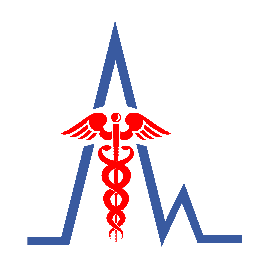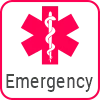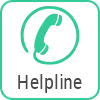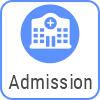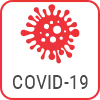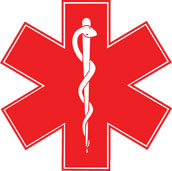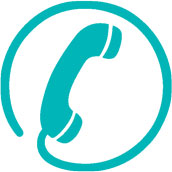Neurology
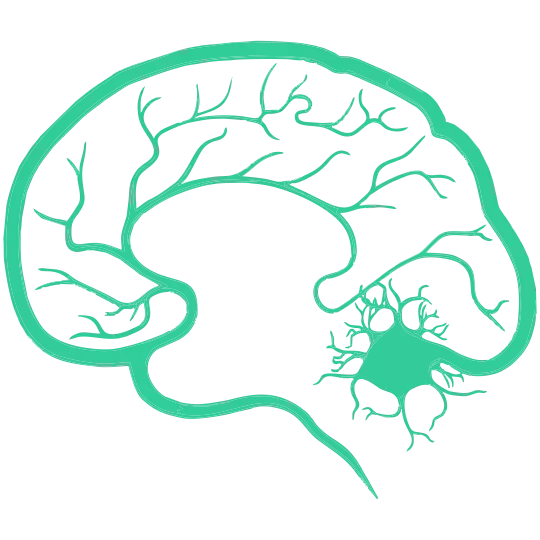
Treatment of Neurological Complications and post treatment rehabilitation is signature of our Department of Neurology.Patients diagnosed with brain injury, epilepsy, sleep disorders, stroke, and neck and spine conditions seek the expertise of our neurologists. Our experienced neurologists work efficiently with radiologists to treat patients through neurosurgery and general neurology.
Beyond administering care and treatment, we also empower patients with rehabilitation therapy programmes specially designed for individual needs. Based on your specialist’s recommendation, we will provide relevant neuro-rehabilitation services that include occupational therapy, physiotherapy, and speech therapy.
Treatments in Neurology
A stroke occurs when blood supply to the brain is disrupted. The arteries (blood vessels) carrying oxygen-rich blood to the brain can become blocked, this damages the part of the brain fed by these arteries. The signs of a stroke vary depending on the location and size of the affected area. In a transient ischaemic attack (TIA), known as mini-stroke, the symptoms last up to 24 hours.
There are 2 common types of strokes:
Ischaemic strokes occur when arteries supplying blood to the brain are blocked due to a build-up of cholesterol deposits, called plaques, in the walls of the arteries. These plaques can burst and lead to clot formation, which can then block blood flow to the brain.
Cause
Ischaemic strokes occur when the arteries supplying blood to the brain are blocked due to a build-up of cholesterol waxy deposits, known as plaques, in the walls of the arteries. This causes the arteries to narrow, or they can burst and lead to the formation of a blood clot, which then block blood flow to the brain.
Haemorrhagic strokes occur when the arteries in the brain burst due to high blood pressure and a brain aneurysm (balloon-like swelling in the wall of the artery).
Cause
Haemorrhagic strokes occur when the arteries in the brain burst due to high blood pressure and a brain aneurysm (balloon-like swelling in the wall of the artery), the bleeding occurs from the arteries within the brain itself.
Different factors increase the risk of a stroke, like a smoking habit and ageing. Other conditions including high blood pressure, high cholesterol level and diabetes mellitus increase the risk of a stroke. Some heart complications including irregular heartbeat, recent heart attacks, and previous strokes or TIA (mini-stroke) further increase the risks.
Symptoms
- Sudden numbness or weakness of the face and/or limbs, especially on one side of the body
- Slurred speech, crooked smile or drooping mouth corner, drooling and difficulty swallowing
- Headache, sudden dizziness
- Blurred vision, double or blackened vision, or sudden loss of vision on one side of the visual field
- Trouble with walking, loss of balance or coordination
The onset of these symptoms always occurs suddenly.
Some patients may experience transient ischemic attacks (TIAs), also known as mini-strokes, which may occur a few times before an actual stroke. Signs and symptoms appear temporarily, disappearing within 24 hours.
TIAs are a warning sign that a full-blown stroke can occur within one week, especially within the first 24 hours after the initial TIA. These warnings occur in only about 10% of cases; the other 90% have no warning.
If any of these abnormal symptoms occur, it is vital that patients seek immediate medical attention. As a stroke can be severe and potentially life-threatening, the outcome depends on how soon treatment starts.
Treatment
Your doctor will evaluate your condition and suggest the best treatment depending on the type of stroke you have experienced:
- Blood thinners (eg. aspirin) to help blood flow in ischaemic stroke patients and reduce the risk of a second stroke
- Carotid endarterectomy surgery to remove a severely narrowed neck artery in the brain reducing risk of another stroke
- Medications and dietary changes to control blood pressure, cholesterol level and blood glucose level
- Rehabilitation treatment to help stroke patients continue normal daily activities independently through individualized physiotherapy and speech therapy programmes
- Surgery to treat haemorrhagic strokes
What is Epilepsy?
Epilepsy, also known as seizure disorder, is a neurological condition that affects the central nervous system. It is often diagnosed after someone has suffered at least 2 seizure episodes not linked with any known medical condition. These seizures usually occur when the electrical activity in the brain is disturbed.
Seizures are dangerous and need treatment. There are different types of epilepsy, including:
Idiopathic generalized epilepsy: Generally appears during childhood and is often linked with a strong family history of epilepsy
Idiopathic partial epilepsy: The mildest type of epilepsy, begins in childhood and may be outgrown by puberty
Symptomatic generalized epilepsy: Caused by brain damage during birth or inherited brain diseases
Symptomatic partial epilepsy: Appears in adulthood, caused by localized brain abnormality
Treatment
Medical treatment includes the use of anti-epileptic medication as a first-line treatment
Preventative treatment
- Avoid stress
- Have enough sleep
- Take medication as prescribed
Surgical treatment (most likely brain surgery) follows if medications are ineffective in controlling the seizures
What is Parkinson’s disease?
It is a common degenerative neurological disorder that affects more than 4 million people around the world. It is characterized by abnormal body movements. There is currently no cure, but certain medications and treatment options are available to alleviate the symptoms and improve quality of daily life.
Cause
Parkinson’s disease is caused by the progressive degeneration of a structure in the brain called the substantia nigra. This structure is responsible for producing dopamine, a neurotransmitter (brain chemical) that controls movement. Lack or low levels of dopamine trigger symptoms of Parkinson’s disease.
Symptoms
- Balancing difficulty when walking or standing
- Drooling and difficulty swallowing
- Emotionless face
- Shaking of arms and legs (when at rest)
- Slow walking and slow movement
- Stiff neck, legs and body
Treatment
Your doctor will evaluate your condition and suggest treatment depending on your symptoms, age and other medical conditions. Treatment may include:
Dopaminergic therapy, which uses medication to compensate for the lost dopamine
Dopamine agonists mimic the action of natural dopamine
Levodopa therapy delivers dopamine to the brain
Non-dopaminergic therapy, which uses medications that do not directly involve dopamine Amantadine drug that increases the release of dopamine, or inhibits the release of another neurotransmitter called glutamate
Anti-cholinergic drugs that inhibit the action of another neurotransmitter, called acetylcholine, which becomes more active when dopamine levels go down
Treatment of movement disorders with oral medications or injections, used to reduce the frequency and severity of abnormal movements
Neurosurgery
A brain tumour refers to abnormal tissue growth in the brain, it occurs when cells in the brain divide uncontrollably and produce extra tissue. A brain tumour can begin from the brain cells (primary), or it can spread to the brain from cancer cells in other parts of the body, like the breast or lung (secondary). Brain tumours can be benign (non-cancerous) or malignant (cancerous).
Types of Brain Tumours
- Glioma develops from the glial cells (cells that support and protect the nerves)
- Meningioma develops in the meninges (brain membranes)
- Medulloblastoma develops in the cerebellum (located at the back of the brain) and is common in children
Symptoms
Brain tumours are characterized by various symptoms, which may include any of the following:
- Change in mental state
- Loss of balance
- Loss of consciousness
- Loss of memory
- Nausea and dizziness
- Problems in vision and speech
- Regular headaches (may worsen in the morning)
- Seizures
- Weakness in one part of the body
Complications & Related Diseases
- Allergic reaction to drugs used in the treatment
- Depression
- Headaches
- Hearing loss
- Increased risk of blood clot formation
- Personality changes
- Premature menopause and infertility (potential side effects of radiotherapy and chemotherapy)
- Seizures
- Vision problems, if the brain tumour damages the nerves that connect to the visual cortex (part of the brain responsible for processing visual information)
- Weakness in one part of the body, if the brain tumour affects parts of the brain responsible for movement and strength of arms and legs
Treatment
There are different treatment options available to manage brain tumours. A doctor will evaluate the condition and suggest the appropriate treatment, which could include:
- Chemotherapy (given as an oral or an intravenous drug) is used to destroy cancerous brain cells
- Radiotherapy uses high energy rays to destroy the tumour. There may be side effects of hair loss and tiredness during this treatment.
- Surgery to remove part or all of the tumour, depending on the size and its location
Targeted drug therapy consisting of drugs that target specific tumour abnormalities
What is a Brain Aneurysm?
Brain Aneurysm is a ‘bubble’ that occurs in the wall of an artery within the brain which can fill up with blood and eventually burst, potentially causing serious damage to the surrounding brain cell
Symptoms
These may not be visible until bleeding occurs
- Impaired vision and speech
- Loss of consciousness or short blackouts
- Nausea and vomiting
- Neck pain
- Paralysis or weakness on one side of the body
- Seizures
- Sudden severe headache
Treatment
Brain aneurysms must be treated immediately to avoid death. The aim of the following treatments is to stop the aneurysm from bursting, or to prevent bleeding if the aneurysm has already burst:
- Bypass procedure: This is used to reroute blood around the blocked part of the artery (done at the same time as the occlusion procedure)
- Microsurgical clipping: The surgeon places a clip around the bulging aneurysm to cut its blood supply and prevent further bleeding
- Occlusion: This open surgery procedure blocks blood flow to the aneurysm through the artery
Minimally Invasive Microdiscectomy
What is Minimally Invasive Microdiscectomy?
Discectomy is done to treat a herniated disc in the spine, also known as a ‘slipped’ disc. The surgery involves the removal of the part of the disc that is putting pressure on the nerve.
Why Microdiscectomy is done?
When you have a herniated disc, it means that a part of the normal spinal disc has moved out of place. This may press against the spinal cord or the nerves that surround the spinal cord, thus causing your symptoms like pain, numbness in the knee etc. Your doctor may recommend a discectomy to relieve your symptoms.
Laminectomy
What is Laminectomy?
Laminectomy is a surgical procedure to reduce the pressure on the spinal cord or spinal nerve roots caused by spinal stenosis. Spinal stenosis is the narrowing of the spinal canal, this puts pressure on the spinal cord, which is filled with nerves, and leads to pain, numbness, or weakness in the legs, back, neck and arms.
Why Laminectomy?
One of the most common reasons for laminectomy is intervertebral disc herniation. If the herniated disc is in the lumbar region, this can cause sharp and continuing back pain, a weakening of the muscles in the leg, and some loss of sensation in the leg and foot. It may also be difficult to raise the leg when it is held in a straight position.
A herniated disc in the neck region can cause symptoms including pain, numbness and weakness in the arm. A herniated disc may be triggered by twisting the back while lifting something heavy. During the spine surgery, the surgeon will attempt to relieve the pressure on nerves and nerve roots by removing the pulpy material that is protruding from the disc.
Our team of Experts at Neurology
| Name | Credentials | Department |
| Dr. PROSENJIT CHAKRABORTY | MBBS, MD (MED), DM (NEURO), F.A.A.N | NEURO MEDICINE |
| Dr. T K BANERJEE | MBBS, MD, FRCP (LAND), F.A.A.N | NEURO MEDICINE |
| Prof. (Doctor) TRISHIT ROY | MBBS, MD, DM (NEURO) | NEURO MEDICINE |
| Prof. (Doctor) ANUP BHATTACHARIA | MBBS, MD, DM (NEURO), FRCP (EDIN) | NEURO MEDICINE |
| Prof. (Doctor) DIPESH KR MONDAL | MBBS, MD, DM (NEURO) | NEURO MEDICINE |
| Dr. T K DAS | MBBS, DIP B M.SC, DCH, MD, MRCP, FRCP | NEURO MEDICINE |
| Dr. S P GHORAI | MBBS, MS, M.CH (NEURO SURG.) | NEURO SURGERY |
| Dr. A K ACHARYA | MBBS, MS, M.CH (NEURO SURG.) | NEURO SURGERY |
| Dr. DIBYENDU KUMAR RAY | MBBS, MS, M.CH (NEURO SURG.) | NEURO SURGERY |
| Dr. INDRANIL SAHA | MBBS, MD (PSY), DPM (CIP), MIPS | NEURO PSYCHIATRY |
| Prof. (Doctor) ASISH MUKHOPADHYAY | MBBS, DCH (CAL), MD (PSY), FIPS | NEURO PSYCHIATRY |
| Dr. ARNAB GHOSH HAZRA | MBBS, MD (PSY) | NEURO PSYCHIATRY |
| Dr. SAUGATA BANDYOPADHYAY | MBBS, DTM&H, MRCPSYCH (UK), PGCMHSC (UK), CCT (UK) | NEURO PSYCHIATRY |
Facilities in the dept. of Neurology
MRI Brain / MRI Brain Angio (Neurology)
The MRI scan is an imaging test that allows physicians to assess a patient’s brain anatomy and investigate an anatomical cause of the patient’s Headache/Weakness/Seizure /Blurring of Vision etc. This test is done at our Diagnostic Division.
Machine Used – MRI Signa HDXT 1.5T
MRI Spectroscopy (Neurology)
While magnetic resonance imaging (MRI) identifies the anatomical location of a tumor, MR spectroscopy compares the chemical composition of normal brain tissue with abnormal tumor tissue. This test can also be used to detect tissue changes in stroke and epilepsy. This test is done at our Diagnostic Division.
CT scan of Brain (Neurology)
CT scans Of Brain can provide more detailed information about brain tissue and brain structures than standard X-rays of the head, thus providing more data related to injuries and/or diseases of the Brain. This test is done at our Diagnostic Division.
Machine Used – GE Bright Speed Elite
EEG (Neurology)
An electroencephalogram (EEG) is a noninvasive test that records electrical patterns in your brain. The test is used to help diagnose conditions such as seizures, epilepsy, head injuries, dizziness, headaches, brain tumors and sleeping problems. It can also be used to confirm brain death.
EMG (Neurology)
EMG results are often necessary to help diagnose or rule out a number of conditions such as: Muscle disorders, such as muscular dystrophy or polymyositis. Diseases affecting the connection between the nerve and the muscle, such as myasthenia gravis. This test is done at our Diagnostic Division.
NCV (Neurology)
A nerve conduction velocity (NCV) test — also called a nerve conduction study (NCS) — measures how fast an electrical impulse moves through your nerve. NCV can identify nerve damage. This test is done at our Diagnostic Division.
VEP (Visual Evoked Potential)
VEP is a diagnostic test used to check the optic nerve pathway which runs from your eyes to your brain. A doctor may recommend that you go for a VEP test when you have had changes in your vision that can be due to problems along the optic nerve pathway. This test is done at our Diagnostic Division.
Neuro PET (Neurology)
A positron emission tomography (PET) scan is an imaging test that allows your doctor to check for diseases in your brain. The scan uses a special dye containing radioactive tracers. … When detected by a PET scanner, the tracers help your doctor to see blood flow in the brain, to demonstrate areas of activity. This test is done at our Diagnostic Division.
Machine Used – Siemens mCT 128 with Ultra HD Technology
C Arm Machine (Neurology)
The name derives from the C-shaped arm used to connect the x-ray source and x-ray detector to one another. C-arms have radiographic capabilities, though they are used primarily for fluoroscopic intraoperative imaging during surgical, orthopedic and emergency care procedures.
Machine Used – Siemens Siremobil Compact L
Neurosurgery Microscope (Neurology)
Neurosurgical Microscopes. It is a type of operating microscope especially adapted for surgeries involving the brain, spinal cord and spine. Equipped with a binocular head with adjustable eye pieces and foot controls to allow freedom of arm movement, it illuminates and magnifies the deeper parts of the operating field.
Machine used – Leica Microscope
